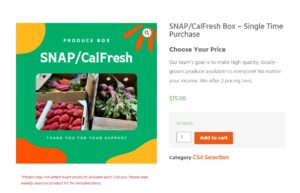New summer food program to feed more than 30 million kids, USDA says. What to know
President Joe Biden’s administration on Monday announced a new effort to feed millions of children over the summer in an effort to address hunger and food insecurity. Here’s what to know about the program, including who is is eligible, how it works and more.
WHAT THE PROGRAM DOES
The effort aims to provide “adequate nutrition” to more than 30 million kids over the summer by expanding Pandemic Electronic Benefit Transfer, or P-EBT, benefits, the U.S. Department of Agriculture says. P-EBT, a COVID-19 relief program, provides eligible school children with “tempo
WHO IS ELIGIBLE?
All low-income children are eligible for the benefits this summer, the USDA says. That includes children who are eligible to receive free or reduced meals during the school year, and children under age 6 who live in a household that receives Supplemental Nutrition Assistance Program, or SNAP, benefits. About 34 million children meet those requirements, White House Press Secretary Jen Psaki told reporters Monday. “Families of eligible children typically receive $6.82 per child, per weekday, or roughly $375 per child over the summer months,” the USDA says.
HOW DOES IT WORK?
Parents or guardians of eligible children will receive the EBT cards in the mail from their state agency and don’t need to “take any action,” Psaki said. “Each child will receive a $375 credit loaded onto an EBT card that can then be used by parents or guardians to purchase food,” she said.
WHY IT MATTERS
Roughly 29 million adults and 12 million children “haven’t always had enough to eat” during the pandemic, according to the Agriculture Department.
“Further, food insecurity has disproportionate impacts on communities of color, with more than 1 in 5 Black and Latino adults living in food insecure households compared to 1 in 9 adults overall,” the department says. Feeding America, a non-profit network of food banks, estimates that more than 10 million children lived in “food-insecure households” before the pandemic and says that many of these households don’t qualify for federal nutrition programs. Additionally, the USDA estimates that summer nutrition programs typically reach less than 20% of the number of students served when school is in session. It says research shows, however, that P-EBT has a “measurable impact on food insecurity” and decreases “food hardship” by 30% in the week after benefits are issued. “The expansion of P-EBT benefits over the summer is a first-of-its-kind, game-changing intervention to reduce child hunger in the United States,” Agriculture Secretary Tom Vilsack said in a news release. “By providing low-income families with a simple benefit over the summer months, USDA is using an evidenced-based solution to drive down hunger and ensure no child has to miss a meal.”
HOW IS IT FUNDED?
The program is funded through the American Rescue Plan, the $1.9 trillion COVID-19 relief package signed into law by Biden in March. It was established in March 2020 to provide funding for families to help make up for meals students were missing when schools closed due to the spread of the coronavirus and was set to expire Sept. 30, 2021. Benefits will now be available through the duration of the pandemic under the American Rescue Plan. The program “builds on” Summer EBT pilots, which the Agriculture Department says launched in 2011 and have “proven successful at reducing severe food insecurity as well as improving the quality of children’s diets.”
WHAT ELSE TO KNOW
The program is included in the American Rescue Plan’s more than $12 billion in funding toward new nutrition assistance to “address hardship caused by the pandemic,” the USDA says. That assistance includes a 15% increase in SNAP benefits, $1.1 billion in funding for “territories that operate nutrition assistance block grants” and nearly $900 million toward the Special Supplemental Nutrition Program for Women, Infants and Children. It also includes a “broad range of flexibilities” to help schools and childcare services “serve healthy meals for free to all kids in the 2021-2022 school year” and funding to provide meals to young people experiencing homelessness.






